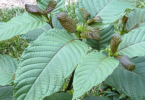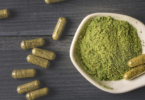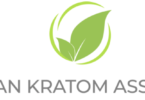http://www.pbs.org/newshour/updates/kratom-dea-illegal/

A Thai Malay Muslim drug user breaks up the kratom leaf into a pan to form part of a popular cheap narcotic drink called 4 x 100 on September 1, 2011, in Narwathiwat, southern Thailand. Photo by Paula Bronstein/Getty Images
The U.S. Drug Enforcement Administration (DEA) has received thousands of comments on whether it should make a psychoactive painkiller called kratomillegal because some say it could be key to battling the country’s opioid epidemic.
The DEA announced in August that it would list kratom, which is typically sold as a powder in capsules or for tea and can produce both a narcotic and a stimulant effect, as a Schedule 1 drug — along with heroin, LSD and ecstasy. Schedule 1 drugs are illegal because they have a “high potential for abuse” and there is no existing research that would make it acceptable for medical use.”[With kratom] we’re basically running a huge unconsented medical experiment on the whole population.”
But some researchers studying kratom are pointing to several laboratory studies on mice that suggest it could help wean users off opioids – an overly prescribed, highly addictive class of drugs that killed 28,000 people in 2014. Other critics also say that making it illegal will only spur demand on the black market, instead of getting rid of it.
Responding to pushback, the DEA in October withdrew its decision and opened a public comment period. It garnered 23,000 comments and 140,000 petition signatures urging the government to keep it legal.
Mark Kleiman, Professor of Public Policy at New York University’s Marron Institute of Urban Management and at NYU Wagner, unpacked the debate for the PBS NewsHour Weekend.
What is kratom and where did it come from?
Kratom is the leaves of a plant native to Thailand. It’s a psychoactive drug. One of the things it does it have some of the same effects that opiates have — that is to say, it binds to the same receptor. So it is a pain reliever. It makes some people cheerful. Has some other effects that are like the effects of the opiates. People can get some pain relief from it and get some cheerfulness from it, but it seems to have a ceiling; they can’t keep taking more and more of it. We know that some people who use it for a while, when they stop using it, get withdrawal effects. Apparently not as strong as people tend to get from the opiates.
What can we say for sure?
We know very little about it. The problem that the DEA just faced was that if it’s not a controlled substance than it’s essentially a food substance, basically unregulated. Twenty years ago, Congress basically gave in to the nutraceutical industry and freed them from all of the restrictions that real pharmaceutical companies are under. So they’re not, in principle, allowed to make health claims, though they can imply them pretty strongly, but they can sell stuff that’s never been tested in humans in as much quantity as they want. And the Food and Drug Administration has to prove it’s harmful in order to get it off the market. While for a pharmaceutical drug, the sponsoring manufacturer has to prove it’s safe and effective before they can sell it.
So [with kratom] we’re basically running a huge unconsented medical experiment on the whole population.
You advise the state of Washington in aspects of its drug policy. What would you advise the DEA to do?
You’ve got two choices. You can schedule it, which has all the consequences you’d expect. You’ll probably get some illicit market in it. People be using substitutes. Some of the people using kratom now will now go on to use the opiates because they don’t have their kratom. That’s not something you want. And you may be frustrating research into what could turn out to be a very beneficial drug, including for drug treatment.
READ NEXT: If DEA blocks kratom, promising research on opioid alternative may suffer
So do you want to ban it? Well, I’d be reluctant to ban it. But I’d like to put some kind of control on it. So what I’d say to the DEA is, ‘Let’s put on some lesser measure of control.’ And they would come back to me and say, ‘We don’t have that power.’ So either DEA can make it illegal and you go to jail for having it, or they can sit on their hands. They do not have a third option.
There’s no wiggle room?
The policy does not exist. So the Controlled Substances Act … desperately needs revision.
People make fun of DEA about cannabis all the time. They say, well you’ve got cannabis in schedule 1 with heroin? Seriously? And that misunderstands the way the law works. Because what the law says is, if a drug has abuse potential…
And if there is no proven or known medical benefit or treatment benefit…
Then it’s illegal, and it’s got to be in Schedule 1. Schedules 2 through 5 are for [drugs] with demonstrated medical benefit to a fairly high standard of demonstration. The DEA could have decided 30 years ago, ‘Lots of oncologists think that cannabis helps their patients with nausea. That’s accepted medical use. We’re going to treat it as accepted medical use.’ But they decided the other way, so that’s the current definition of the law that the courts have upheld. And that leaves no place in the law for a drug of moderate abuse potential and no [proven] medical use.
Now all we need is Congress to rewrite the Controlled Substances Act to allow room for drugs that have moderate abuse potential and no accepted use, and drugs that may have medical use but it hasn’t been proven yet.
The current act does not give us a good way to deal with drugs [like] kratom, of which there are many. Congress could also pass a law creating a class of drugs that can be sold only behind the counter. If such a category existed and the kratom question came along, I think my advice to DEA is, ‘Let’s put it behind the counter while we find out whether it’s a big problem or not.’
If the DEA decides to schedule it, what are the consequences for people who use it?
It’ll become more expensive; it’ll become less available. People will counterfeit it. People will adulterate it. People will get arrested for using it. People who can’t get it will move on to other drugs.
The problem is, let’s imagine that you decided that kratom has medical value, and you’d like to set up a company to do that medical research and, once it’s approved, sell it. You can’t even start using it in humans experimentally until you’ve run a lot of mice through it. So that’s a few million dollars’ worth of work and a couple years at least. Then if you’re lucky you’ll be able to start phase 1 human trials just to see if it’s safe. Then if that works then you get to start to phase 2, small-scale studies to see if it’s effective in various populations for various indications. And if that works we’re now seven years into the process, you might get approval to start full phase 3 clinical trials, which means you can spend $5-10 million.
If it’s scheduled, everything will get more expensive because then you’re going to need special DEA permission to do the experiment. But whether it’s scheduled or not, you can put it through all these trials, and at the end of the day, the FDA has to decide whether it’s safe and effective to treat disease x in population y.
How long does something like that take?
Decade would be optimistic for a new drug like this. You’ve spent millions of dollars along the way. If the indication, the beneficial use is pain relief, a ferociously hard endpoint to measure. There’s no objective correlative.
And you have the additional problem that it’s a plant. So you’d either have to prepare a standardized version of the plant or do an extract, or find the active molecules, all of which is complicated. Once you’d done all of that [the FDA could say], ‘Hey, it’s just a plant, it’s just a couple molecules, there’s nothing there to patent.’ So now you’ve spent $10 million plus the interest on all that money in all those years and won your lottery ticket. Anybody else can get in right next to you. So not only is our drug control mechanism broken, our drug approval mechanism is broken.
This interview has been edited for length and clarity.







